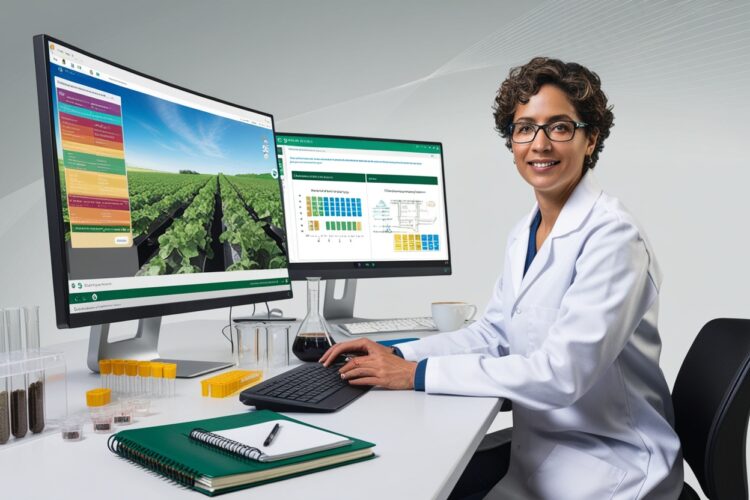Ensuring Annotation Accuracy in Complex Agricultural Environments
Ensuring Annotation Accuracy in Complex Agricultural Environments
In the rapidly evolving field of precision agriculture, data annotation plays a crucial role in developing AI-driven solutions for crop monitoring, yield prediction, and automated farming. However, ensuring annotation accuracy in complex agricultural environments presents unique challenges due to varying lighting conditions, diverse crop structures, and seasonal changes. High-quality annotations are essential to train machine learning models that can make reliable decisions, ultimately improving efficiency and sustainability in agriculture.
Challenges in Agricultural Data Annotation
1. Variability in Natural Conditions
Unlike controlled environments such as factories or urban landscapes, agricultural fields are subject to unpredictable weather conditions. Shadows, reflections, and changes in lighting throughout the day can make it difficult to create consistent annotations. Seasonal variations also affect plant appearances, requiring annotators to account for different growth stages and environmental changes.
2. Diverse Crop Types and Growth Stages
Agricultural datasets must cover a wide range of crops, each with unique features, such as shape, size, and texture. A single dataset may contain young seedlings, mature plants, and harvested fields, making annotation more complex. Incorrect labeling at any stage can lead to misinterpretations by AI models.
3. Occlusions and Overlapping Objects
Plants often grow in dense clusters, making it challenging to distinguish individual crops from weeds or other vegetation. Similarly, fruits and leaves may overlap, requiring precise polygon annotations instead of simple bounding boxes to ensure accurate segmentation.
4. Pests and Diseases Identification
Detecting pests, diseases, or nutrient deficiencies requires highly detailed annotations at microscopic levels. The presence of subtle differences between a healthy and an infected plant makes this task even more demanding. Annotation teams must have domain expertise to correctly label affected areas and provide nuanced data for training AI models.
5. Scalability of Annotation
Manually annotating large-scale agricultural datasets is labor-intensive and time-consuming. Ensuring accuracy while scaling up annotation efforts is a significant challenge. Using automated or semi-automated annotation tools can help speed up the process, but human validation remains essential to maintain high precision.
Best Practices for Accurate Annotation in Agriculture
1. Leveraging Expert Knowledge
Collaborating with agronomists and farmers ensures that annotations are precise and meaningful. Experts can provide insights into plant growth patterns, disease symptoms, and environmental factors that impact agricultural data.
2. Using Multi-Stage Annotation
A multi-stage annotation process can enhance accuracy by incorporating initial rough annotations, refinement through expert review, and final validation using AI-assisted checks. This iterative approach minimizes errors and improves data reliability.
3. Employing Advanced Annotation Techniques
Traditional bounding boxes may not be sufficient for agricultural annotation. Instead, techniques such as:
- Polygon annotations for irregularly shaped leaves and fruits,
- Semantic segmentation to differentiate between crops, weeds, and soil,
- Instance segmentation to identify individual plants within clusters,
- Keypoint annotation for tracking plant structure changes, can provide highly detailed and useful training data for AI models.
4. Using AI-Assisted Pre-Annotations
AI-driven pre-annotation tools can accelerate the process by generating initial labels, which human annotators can refine. This hybrid approach reduces manual effort while maintaining accuracy.
5. Implementing Quality Control Mechanisms
Regular quality checks, inter-annotator agreement analysis, and continuous training for annotators ensure that the dataset remains consistent and accurate. Employing review teams to cross-verify annotations helps in identifying errors before they impact AI model performance.
The Future of Agricultural Data Annotation
As technology advances, annotation processes in agriculture will become more automated with the help of AI-driven tools, drone imagery, and high-resolution satellite data. Future innovations, such as self-learning annotation models and real-time annotation through augmented reality (AR), could further streamline the process. However, human expertise will always be crucial in ensuring that agricultural AI systems are both accurate and reliable.
At Outline Media Solutions, we specialize in high-quality agricultural data annotation services, ensuring precision and reliability for AI-driven farming applications. Our team of experts utilizes cutting-edge techniques to provide accurate labeling, helping AI models perform optimally in real-world agricultural scenarios.
Conclusion
Ensuring annotation accuracy in complex agricultural environments is a challenging yet essential task for the advancement of precision agriculture. By leveraging expert knowledge, employing advanced annotation techniques, and integrating AI-assisted tools, we can create high-quality datasets that drive innovation in farming. As the demand for AI-powered agricultural solutions grows, accurate annotations will remain the foundation for more efficient, sustainable, and productive farming practices.



